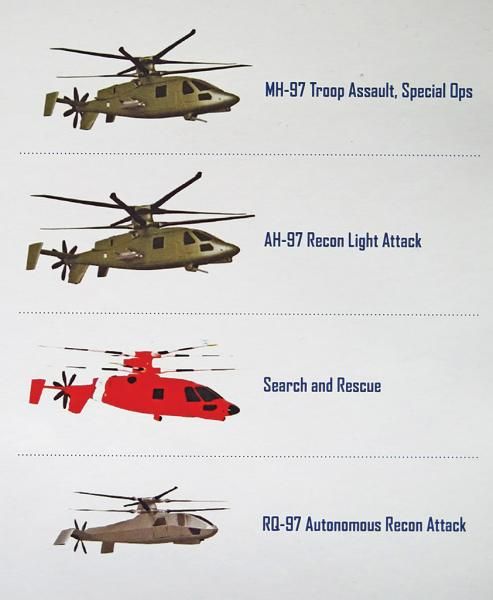S97 Raider
As if you didn't know...not exactly "A" (singular) flexbeam, more akin to a beefy composite TT strap or loop.
It really depends on what one considers a "flexbeam" semantically. In the traditional sense like an S-92 tail rotor, Comanche, or Bell 680/H1 style chicken foot yoke/flexbeam? No.
But if you pay close attention, you'll notice even Sikorsky refers to these types of multi-node structures as "flexbeams"
https://www.google.com/patents/US7695249
https://www.google.com/patents/US20150014476
It really depends on what one considers a "flexbeam" semantically. In the traditional sense like an S-92 tail rotor, Comanche, or Bell 680/H1 style chicken foot yoke/flexbeam? No.
But if you pay close attention, you'll notice even Sikorsky refers to these types of multi-node structures as "flexbeams"
https://www.google.com/patents/US7695249
https://www.google.com/patents/US20150014476
Last edited by SansAnhedral; 1st May 2017 at 21:31.
There was a consensus that there was a legitimate requirement, but no confidence that the Cheyenne's problems could be fixed. Hence the AH-64, to replace the Cheyenne.
The Bell Cobra may not have been what the Army upper eschelon wanted, but it provided the grunts on the ground in Vietnam the machine they need for a decade before the Apache came around.
The Cobra was indeed in service at the time, no question. The Cheyenne was to be the clean sheet follow on, faster, more powerful and more capable.
The Apache was launched as a Cheyenne successor after that effort ran into technical problems.
The Apache was launched as a Cheyenne successor after that effort ran into technical problems.
A goodly number of my colleagues who flew in the USMC likewise found the Cobra a capable platform.
After a lot of improvements and growth over the years.
@SASless: IIRC, the Marines flew three (J, T, W) Cobra variants variations (twin engine) before the recent Z model (Viper) made a big change in what a Cobra is. Not sure if there was a single engine model mixed in there in the dim and distant past.
Back in the time of target designation being made by map coordinates given by a very scared guy on the ground (no gps) and either a smoke grenade or perhaps some tracers or muzzle flashes.....or at night tracers or verbal directions and visible light strobe lights/flashlights....there was some discussion as to the effect of having two pilots in an enclosed cockpit versus having two door gunners as well had on efficiency in acquiring targets.
With the advent of hi-tech means of locations, nvg's, FLIR, etc......the two pilot gunship has come into its own!
The USMC also uses their latest UH-1 for gunnery Support as I hear it.
With the advent of hi-tech means of locations, nvg's, FLIR, etc......the two pilot gunship has come into its own!
The USMC also uses their latest UH-1 for gunnery Support as I hear it.
It should be noted that the one attempt in Iraq to engage a large tank formation solely with Apache helicopters was not a success. It is doubtful that the Cheyenne would have done much better.
Apples to Oranges....the Cheyenne was '60's technology and only reached prototype status with three aircraft .
Perhaps that Apache thing was tactics/planning/intel failure generated rather than an aircraft failure!
Perhaps that Apache thing was tactics/planning/intel failure generated rather than an aircraft failure!
Separately, the Cheyenne was much more advanced than the AH-64.
The combination of a pusher prop, a wing and a rigid rotor allowed much better acceleration and maneuverability than the Apache could offer. Technically, the Apache was two steps backward, but it was more powerful and safer than the Cobra, which was what the Army wanted.
More roles envisaged for the S-97
Last edited by chopper2004; 2nd May 2017 at 22:56.
The Army accepted that the Apache would not match the Cheyenne performance. It has not closed the gap since, partly because the design is less capable, partly because weight growth has negated the gains from the improved power train and rotor.
It should be noted that the one attempt in Iraq to engage a large tank formation solely with Apache helicopters was not a success. It is doubtful that the Cheyenne would have done much better.
It should be noted that the one attempt in Iraq to engage a large tank formation solely with Apache helicopters was not a success. It is doubtful that the Cheyenne would have done much better.
A friend of mine wrote a paper on the problems of the Army "getting" CAS and Rotary Wing aviation. It may be a bit dated, but the Army changes as slowly as any top heavy organization.
So, once they finally got that acceptance, they had to go an prove it. 11th paid a price for that. (How about let's give the Iraqi's a bit of credit for being a smart, thinking enemy in how they handled that ambush).
OK, I get the troop assault and the recon attack.
SAR?
FFS, let's give it a rest.
SAR?
FFS, let's give it a rest.
I'm still in awe of the maneuverability and handling characteristics of the XH-51 in that video.
So - reading back through the thread - essentially you are all debating whether a rigid rotor co-axial design will effectively scale up to the size required by the Raider?
So - reading back through the thread - essentially you are all debating whether a rigid rotor co-axial design will effectively scale up to the size required by the Raider?
- The Raider is the upper limit of the ABC technology scalability that will still meet some of its performance goals versus conventional helicopters
- Even at S-97 gross weight it will not perform the high-G maneuvers advertised (even X2 never demonstrated the same at 1/2 size)
- A flyaway cost for S-97 would not come anywhere close to the purported $15 million price tag
The real feasibility challenge is scaling up 2X again to SB-1 size and meeting any of the maneuverability, speed, and cost targets.







